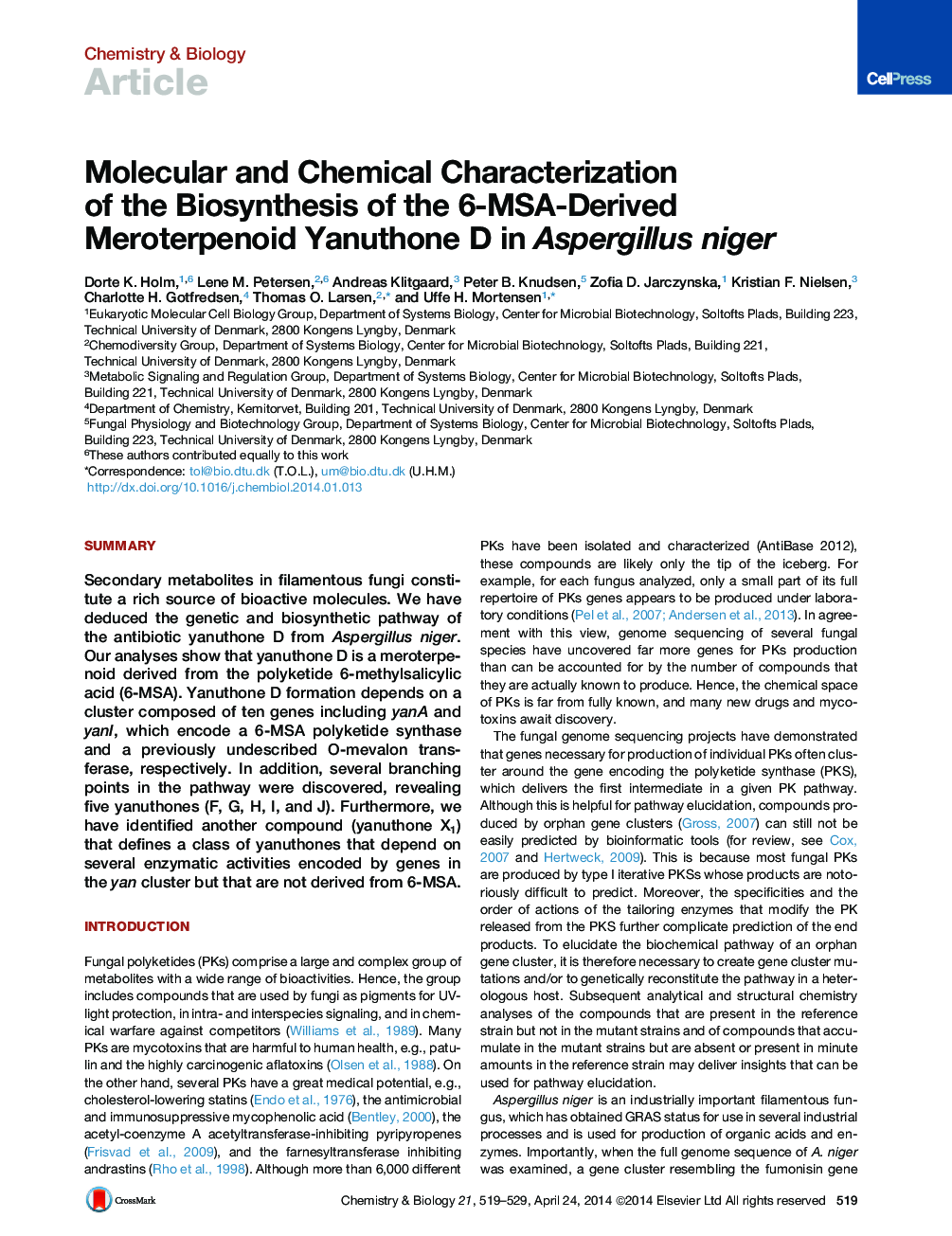| Article ID | Journal | Published Year | Pages | File Type |
|---|---|---|---|---|
| 1391098 | Chemistry & Biology | 2014 | 11 Pages |
•A. niger produces the model polyketide 6-MSA, which is a precursor to yanuthone D•The yan cluster comprises ten genes, and 6-MSA is converted to yanuthone in eight steps•An enzymatic activity, O-mevalon transferase, is required in the process•Six structures were elucidated, including a class of yanuthones
SummarySecondary metabolites in filamentous fungi constitute a rich source of bioactive molecules. We have deduced the genetic and biosynthetic pathway of the antibiotic yanuthone D from Aspergillus niger. Our analyses show that yanuthone D is a meroterpenoid derived from the polyketide 6-methylsalicylic acid (6-MSA). Yanuthone D formation depends on a cluster composed of ten genes including yanA and yanI, which encode a 6-MSA polyketide synthase and a previously undescribed O-mevalon transferase, respectively. In addition, several branching points in the pathway were discovered, revealing five yanuthones (F, G, H, I, and J). Furthermore, we have identified another compound (yanuthone X1) that defines a class of yanuthones that depend on several enzymatic activities encoded by genes in the yan cluster but that are not derived from 6-MSA.
